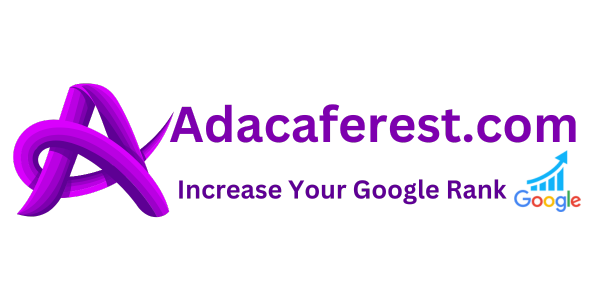The Best Books for Beginners and Established Illustrators

It’s crucial to continue learning and improving your skills as an illustrator. Reading books on illustration is one of the best ways you can do this. This post will highlight some of the most useful books for both beginners and professionals. These books can help you achieve your goals, whether you are looking for new techniques or inspiration from great artists.
It is important to read books on illustration.
Both new and experienced illustrators find it extremely important to read books on illustration. These books offer valuable insights into the art and provide invaluable advice on how to improve your skills, use digital tools effectively, and remain creative.
Books are an excellent way for new illustrators to learn the basics of drawing and painting techniques. These books can help you to understand perspective, color theory, and composition in detail. Many beginner books offer exercises that will help you practice key concepts and create beautiful artwork. This is great for anyone who wants the opportunity to get started creating stunning illustrations. Many beginner-level illustrations books will also explain important concepts like typography, branding, web design, and more.
To stay inspired and up to date, even experienced illustrators will benefit from studying work of peers or industry professionals. Many advanced-level illustrations books provide more detail than ever on topics such as light and shadow, anatomy, and lighting. These books can help you refresh your skills and show you how to properly capture facial features or dynamic lighting.
You can also use books to stay motivated and inspired when you are feeling anxious or lacking in inspiration. Inspirational work by other illustrators can inspire you to keep working on difficult projects or even come up with new ideas.
The top books for beginners
These books are a great place for beginners to begin their artistic and illustration skills. Drawing on the Canvas by Sharon Stein, a book that covers the tools and techniques necessary to an illustrator’s creative process, is a great place to start. This book covers topics like creating concept sketches, building characters, using color theory and creating textures, as well as optimizing your work through digitizing. Sharon’s many years of experience as an illustrator are also included in the book. This article provides more information.
Drawing with Children is another great book for beginning illustrators. It was written by Mona Brookes. Drawing with Children by Mona Brookes teaches children to draw using imagination and creativity. This book helps children create images, even if they have no art background. The book is an essential guidebook for teachers and parents. It helps children get started by breaking down the basics of drawing into manageable steps that allow them to explore their creativity.
Drawing Dynamic Hands, by Burne Hogarth is a comprehensive guide to mastering hand anatomy and figure-drawing for complete compositions. This classic reference book for artists shows how dynamic hand gestures and positions can shape character expression. This allows you create realistic characters that evoke emotions in the viewer, something experienced illustrators strive to achieve.
Andrew Loomis’ Creative Illustration, a classic that every long-term artist should read, is the last. This book contains timeless techniques that will never go out-of-fashion when creating landscapes, figures, still life paintings, story illustrations, and many other types of artwork. Even the most skilled illustrators today find inspiration and ways to improve on old techniques in this amazing resource.
The top books for experienced illustrators
For experienced illustrators, there are many great books available to help them learn about illustration. Although traditional textbooks can be useful, there are many inspiring and informative resources available that can be used to help illustrators improve their skills.
It’s a great place to begin is “The Art of Comic Book Illustration”, a classic by John Buscema, a legendary comic book illustrator. This book covers all aspects of comic book illustration from storytelling to composition and figure drawing. The book includes hundreds of illustrations from famous comic-book artists that bring the concepts to life in vivid detail.
Stan Lee and John Buscema have another great resource: “How To Draw Comics The Marvel Way”, a book that will help experienced illustrators. This book explains how to draw superheroes step-by-step. It includes inks and pencils as well as backgrounds, perspective, anatomy, and background.
Burne Hogarth’s “Dynamic anatomy” is the third essential book for experienced illustrators. This comprehensive guidebook covers everything, from the skeletal structure and muscles to gesture drawing and figure movement. This guidebook is filled with useful diagrams and tips for creating dynamic poses that bring life to any illustration.
The Complete Guide to Perspective by Christopher Hart is a must-have for any serious artist. This guidebook is a must-have for artists who work in perspective. It helps to illustrate how angles change as distance increases and provides helpful tips on creating realistic scenes with accurate scales and depth perception. This book provides a wealth of illustrations and instructions that are easy to follow.
How to get the best out of these books
It is important to fully understand these books and the techniques they use in order to get the most from them. Take the time to read each book and absorb as much information as you can. After you have mastered the concepts, try to apply them in your own art projects. You can try different techniques and approaches until you find the one that works best for you.
Practice by breaking down every element of an illustration into its individual parts. If you are drawing a perspective figure, take your time and draw slowly. Pay attention to the angle and length of each line relative to the rest of the composition. This will ensure that you create complex scenes with accuracy. Also, make sure each element stands out from the others so it can be identified in the overall composition.
References are important, so make sure you use them when possible. As visual guides to anatomy and composition, keep photos or anatomical drawings close by. Keep detailed notes of any new concepts and techniques that you learn, so you can refer back to them later. These books can be a great resource for illustrators who are dedicated to their craft and have the ability to create stunning artwork with practice.





